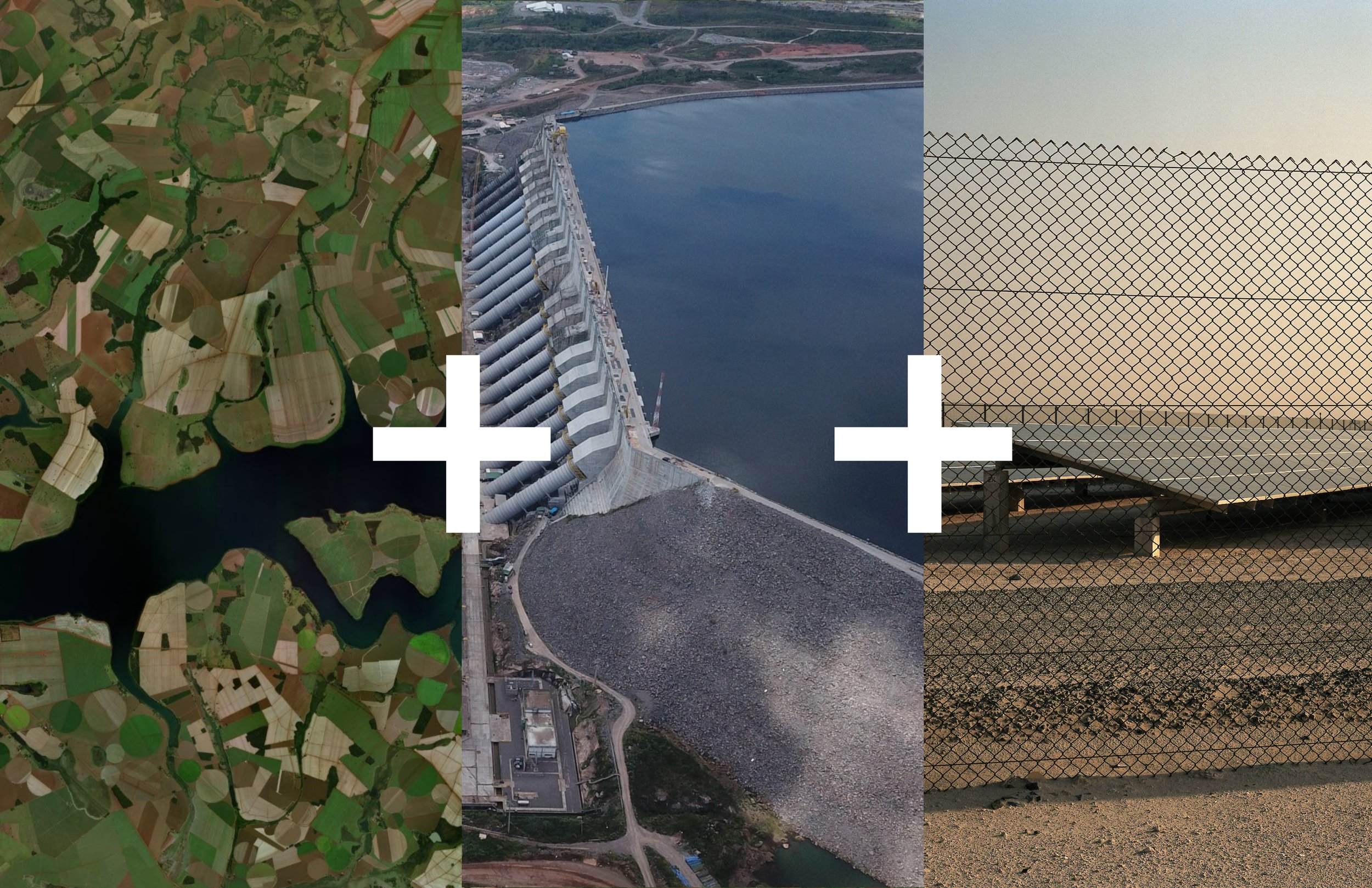Post Retired Lands
Year: 2021
Location: Sobradinho, Bahia, Brazil
Site area: 700.000km²
Individual project and research at Columbia GSAPP
Landscapes for long have been altered due to energy production and agriculture all across Brazil. Associating solar energy to already altered and retired landscapes near reservoirs allows for reduced transmission costs, increased power generation, and diversification of the national energy portfolio.

Currently in Brazil, hydro is responsible for 64% of the energy production, while solar only represents 1.5% of the country’s portfolio. However, looking at graphics of the last 10 years and future projections, it is clear where the focus for new development should be placed at. This proposal will show how we could get to almost 25% of our energy powered by solar farms, and also reduce the reliance on hydroelectric power and get to the end of fossil-fuelled power generation. A lot of opportunities lay on the combination of those two industries and agriculture regarding the urgent goal of reducing greenhouse gas emissions and getting a more diverse and reliable food and energy production by tackling the renewable energy sprawl caused by low power density.

The search for the ideal site for this project started with a national scale analysis. In yellow/orange, the annual global horizontal irradiation directly relates to the potential for solar energy. Blue circles represent existing dams with varying sizes according to the energy produced. The middle map represents existing transmission lines that connect and cut the country. Finally, the five biggest existing solar farms work as a base for comparison. Looking at them together, the Sao Francisco River reservoir presents itself as an area already altered for energy production and of high potential for photovoltaic installation.
The Sobradinho Reservoir is the biggest in South America, with over 4000 square km - or a billion acres. Highlighted along the edges are all land currently used for agriculture. However, climate change has rendered reliance on certain water levels unsustainable. In the near future, most of this agricultural land will shift upstream closer to the water source, leaving behind vast amounts of retired land. And it is in them that we would start the installation of new solar farms. Together with in-ground plants, floatable photovoltaics will be spread throughout the water body, with inverters and performance monitoring stations situated near existing settlements for local job opportunities.
Not only the benefits regarding energy are very significant, but the whole process would also create thousands of jobs. It has the potential to transform Bahia into the first state fully powered by renewable energy, and even turn Sobradinho into an international reference and tourist destination.










